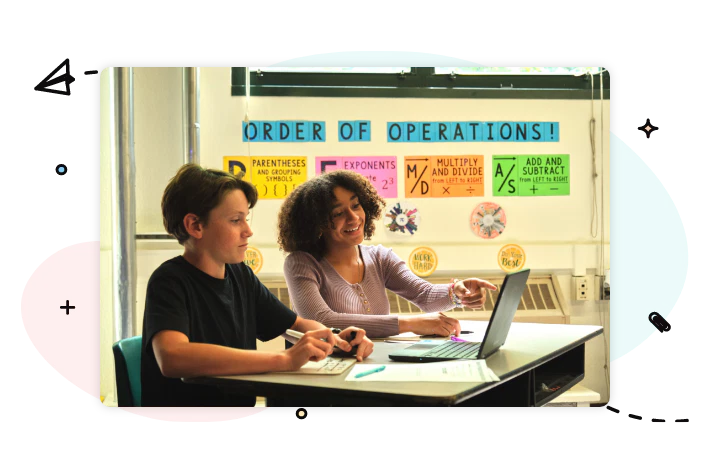
Remember memorizing? That is, being a 国产麻豆剧in a math classroom focused mainly on teacher lectures, repetitive problem sets, and rote memorization?
Fortunately for today’s students, educators are increasingly recognizing that when it comes to math curriculum, engagement must come first—and that when it does, better learning outcomes follow. This shift toward student-centered, engaging math instruction is paving the way for deeper understanding, greater retention, and even a lifelong love of math.
Engaged 国产麻豆剧develop a deeper understanding of math concepts, retain information better, think critically, and are more likely to solve problems creatively. They tend to have a more positive attitude toward math, which reduces potential math anxiety and helps them build confidence. What’s more, access to engaging math programs promotes collaborative learning and the development of communication skills, supporting 国产麻豆剧in all classrooms (and beyond).
That’s why it’s important to find math products, activities, and instructional materials that center 国产麻豆剧engagement. Students need tools designed to not just teach them how to calculate, but also actively involve them in their own learning journeys, making math both meaningful and fun.
Free math lessons and more: Meet Desmos Classroom
Built by a dedicated team of math educators, Desmos Classroom is a free teaching and learning platform packed with interactive lessons that place 国产麻豆剧engagement at the center of instruction.
What are Desmos Classroom activities like in practice? Well, for starters, 国产麻豆剧take control of their learning! Students learn by interacting with mathematical representations, illustrations of the world, and their classmates. They represent their developing ideas with sketches, text responses, card sorts, number responses, multiple-choice questions, and more.
With a free account, you can access both customizable and pre-made Desmos Classroom—with new content appearing frequently for you to add to your lesson plans. An easy-to-use dashboard and real-time visuals allow you to monitor and react to 国产麻豆剧work. Creative teacher facilitation tools also help you promote collaborative and intentional classroom conversations. For example, the optional Anonymize feature reduces self-consciousness and competition, encouraging all 国产麻豆剧to participate and interact freely. Check out more examples below!
K–5 Lesson: Awesome Aquariums

In the activity, 国产麻豆剧experiment with bar graphs and tape diagrams to represent and compare the quantities of various aquatic inhabitants. guide 国产麻豆剧in a Notice and Wonder activity, with an optional Think-Pair-Share.
6–12 Lesson: DinoPops

In the activity, 国产麻豆剧use proportions to understand what size boxes will fit (proportionally) varying sizes of Dino Pops. They’ll understand how graphs can represent proportional relationships, use graphs to make predictions, and use communications skills to describe and defend their work.
How you can get started
Create a free Desmos Classroom account at , then check out the on-demand webinar to learn how to assign a free pre-made lesson to 国产麻豆剧and use features such as anonymizing the class, pacing 国产麻豆剧during a lesson, and pausing classroom work to facilitate conversation. You can also register for another upcoming to learn more about our full suite of math offerings, including our new, curiosity-driven K–12 program, Amplify Desmos Math.
